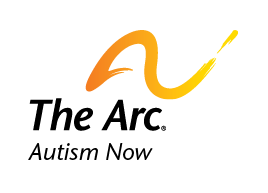Siblings of Children with Autism Spectrum Disorders
Contents
- Introduction
- Nine Domains of Positive Sibling Quality of Life
- Types of Questions Asked by Typically Developing Siblings Prior to Being Informed
- Information Topics Shared with Typically Developing Siblings
- Typically Developing Sibling Reactions to Information
- Recommendations
- References
Introduction
Previous research has suggested that siblings of children with autism spectrum disorders (ASD) have a higher risk of adjustment problems (Meyer et al. 2011), though these previous studies have yielded mixed results (Moyson & Roeyers 2011). These mixed results may be related to the following characteristics of prior studies: different types of studies, the use of different measurements, different perspectives, different comparison groups, lack of accepted measure for the idea of adjustment. In addition, differences exist based on gender, age, birth order, family size, socioeconomic status, and parental response, temperament, and coping styles (Moyson & Roeyers 2011). Previous research has also shown that the adjustment of a child with a sibling who has ASD is related to the type of information they have available to them (Tanaka et al. 2011). This brief focuses on three articles published in 2011 that focus on these three areas of sibling research.
Meyer and others (2011) investigated the adjustment patterns of children with siblings who have ASD by focusing on 70 mothers with at least one child (aged 2-18) with ASD and one additional typically developing child (aged 6-18). This study supported previous findings suggesting that siblings of children with ASD have a higher risk of adjustment issues, and that mothers of children with ASD have a higher risk of depressive symptoms (Meyer et al. 2011). They also found that the presentation of more severe ASD symptoms in one sibling was related to more adjustment issues for the typically developing sibling. However, this relationship was mediated by the mother’s depressive symptoms. In other words, when mothers had more depressive symptoms AND the child with ASD had more severe symptoms, then the typically developing child showed more adjustment issues (Meyer et al. 2011). Meyer and others (2011) also found that typically developing siblings who themselves were described as having symptoms of ASD (even though they had not been diagnosed with ASD) were also at a higher risk of adjustment problems. This relationship was not related to mother’s depressive symptoms.
Moyson and Roeyers (2011) explored the ways that 17 children who have siblings with ASD defined and described their own quality of life. Among the siblings with ASD, all were boys between the ages of 5 and 16 living at home with mild to moderate symptoms. Nine domains of positive quality of life were found as described in Table 1 below.
Table 1. Nine Domains of Positive Sibling Quality of Life
| Domain | Description |
|---|---|
| Forbearance | Dealing with ASD behaviors: most did not let brother with ASD push them around, though some did ignore the behaviors |
| Mutual Understanding | The ability to communicate was important for understanding. Several of the participants did not feel that they were always understood |
| Joint activities | Participants wanted to do “normal” things and reported this was often possible with some accommodations. Some reported disappointment that some activities simply could not be done with the sibling with ASD. |
| Private time | Private time and space was important and proved to be helpful in difficult situations |
| Trust in well-being | They often reported worries about their sibling with ASD, including worries about the present (e.g. whether the sibling was lonely or had friends) and future worries (e.g. where the sibling would live later, work, etc) |
| Acceptance | There were 3 stages of acceptance: digesting the information, going along with it, and getting used to it/beginning to feel like it was “normal”. They also reported that there were times that acceptance was difficult |
| Exchanging Experiences | It was important for them to meet other children who had siblings with ASD. This sharing helped them understand their own stories. |
| Social Support | Participants indicated they needed help and support. They expect parents to listen and treat them fairly. They often wished for additional typically developing siblings, and reported failing to “bother” parents with their own issues. |
| Dealing with the outside world | Some discussed the positives of others not knowing about the disability. However, those that reported it was a secret felt that this was burdensome. For those that were open about the sibling diagnosis, they often felt it was easier to get support and acknowledgement |
(Moyson & Roeyers 2011)
In addition to these nine domains, Moyson and Roeyers found that the invisibility of ASD had a considerable impact on typically developing siblings. While they often were relieved that people outside of the family did not necessarily notice the disability, this invisibility also made it difficult to explain to others. In addition, the variable symptoms of ASD often led to feelings that their sibling only “sometimes” had a disability. At times, this also made them feel that their sibling had a choice about their behaviors (Moyson & Roeyers 2011).
Tanaka and others (2011) investigated what information about ASD was given to 108 typically developing siblings and at what ages they received this information. Seventy-two of the typically developing siblings had been informed and thirty-six had not. Those who had not been told were fairly young (average age of 6 years). The average age at which parents informed typically developing siblings was around 9 years of age (Tanaka et al. 2011).
Parents more often informed older siblings and siblings with an age difference of at least two years. Children who had siblings with high-functioning autism spectrum disorders (HFASD) were informed less frequently, and at older ages. Typically developing siblings were informed at younger ages when they were female, the age difference between siblings was less than two years, and when the total number of siblings was two. Age and gender differences in providing this information may have been related to care expectations of parents (Tanaka et al. 2011).
Prior to being informed, 71% of the typically developing siblings had noticed something, 22% had not noticed anything, and 7% had already guessed at the diagnosis. Sixty-two percent of the parents reported that the typically developing sibling had already asked questions prior to being informed. They most often asked about communication problems and parent behavior (Tanaka et al. 2011). Table 2 outlines the distribution of the kinds of questions parents were asked prior to informing typically developing siblings.
Table 2. Types of Questions Asked by Typically Developing Siblings Prior to Being Informed
| Topic of Question | Percentage |
|---|---|
| Communication problems | 25% |
| Differential parental attitudes | 19% |
| Odd behaviors | 18% |
| Difference in educational setting | 12% |
| Developmental delays | 9% |
| Difference from others | 9% |
| Need for therapy/ treatment | 7% |
| Obsessive behaviors | 2% |
(Tanaka et al. 2011)
Parents most often discussed symptoms and difficulties associated with ASD, having a disability in general, and the causes of ASD. Table 3 outlines the topics included in the information provided to typically developing siblings.
Table 3. Information Topics Shared with Typically Developing Siblings
| Topic | Percentage |
|---|---|
| Symptoms and difficulties | 62% |
| Having a disability | 29% |
| Cause of disability | 28% |
| Reason for special education | 11% |
| How to support | 6% |
| Feelings of child with ASD | 5% |
| Positive aspects of ASD | 5% |
| How to deal with child with ASD | 3% |
| Prognosis | 3% |
| Similarity | 2% |
(Tanaka et al. 2011)
Typically developing siblings had a variety of responses to the information they were given as highlighted in Table 4.
Table 4. Typically Developing Sibling Reactions to Information
| Type of Reaction | Percentage |
|---|---|
| No particular reaction | 45% |
| More positive than expected | 14% |
| Understanding | 14% |
| Sadness | 11% |
| Desire to learn more | 6% |
| Surprise | 3% |
| Did not understand | 2% |
| Other | 6% |
(Tanaka et al. 2011)
Recommendations
This information about the experiences of typically developing siblings suggests that these experiences are unique and important. Professionals providing services to families who have a member with ASD should consider this in their service development and provision. There are several specific recommendations in these three articles.
- Professionals should be alert to the unique needs of each family member, and make necessary supports available.
(Meyer et al. 2011) - Treatments and support groups that include the whole family may be more effective for siblings than individual treatments.
(Meyer et al. 2011) - Exchanging experiences with other children who have siblings with ASD may be especially effective and important.
(Moyson & Roeyers 2011) - Sibling experiences are unique and require specialized social support.
(Moyson & Roeyers 2011) - Secrecy about ASD can be especially burdensome for typically developing siblings.
(Moyson & Roeyers 2011) - Professionals should help make the unique experiences of siblings more visible.
(Moyson & Roeyers 2011)
References
- Meyer, Katherine, Brooke Ingersoll, & David Hambrick. 2011. Factors Influencing Adjustment in Siblings of Children with Autism Spectrum Disorders. Research in Autism Spectrum Disorders 5: 1413-1420.
- Moyson, Tinneke & Herbert Roeyers. 2011. The Quality of Life of Siblings of Children with Autism Spectrum Disorder. Exceptional Children 78: 41-55.
- Tanaka, Kyoko, Tokio Uchiyama, & Fumio Endo. 2011. Informing Children about their Sibling’s Diagnosis of Autism Spectrum Disorder: An Initial Investigation into Current Practices. Research in Autism Spectrum Disorders 5: 1421-1429.

